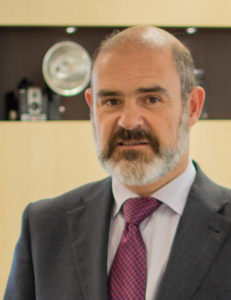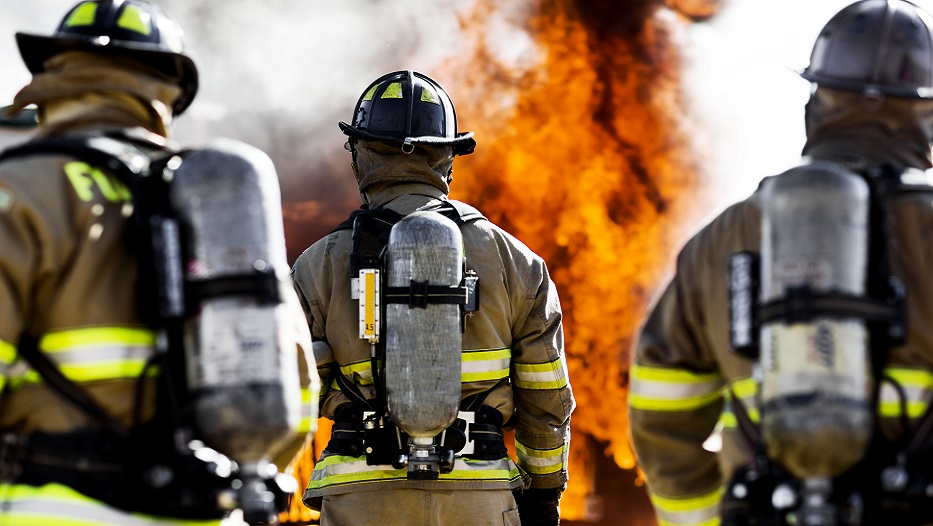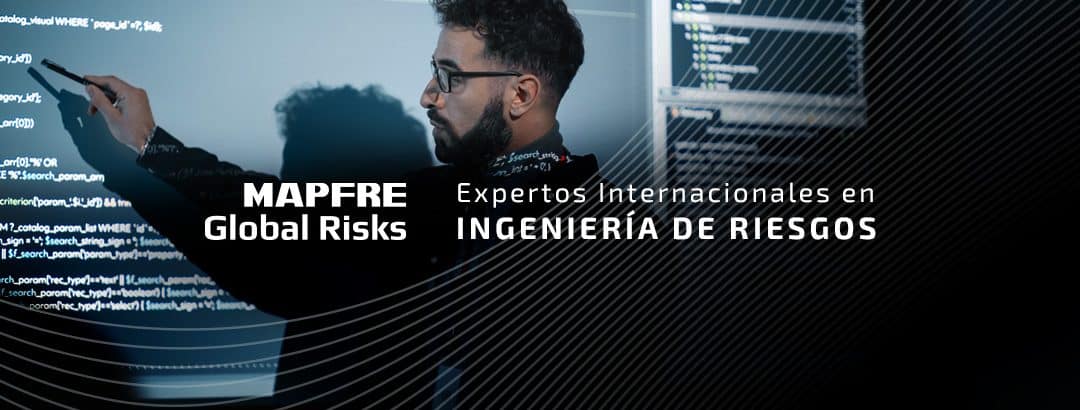admin | 12/02/2019
From its founding 43 years ago, the Association for Research on the Safety of Life and Property, Cepreven, has been dedicated to research on accident prevention so that this information can then be passed on to society by raising awareness and educating.
The Association
Cepreven is a product of the dreams of visionaries who were ahead of their time. People from a variety of industries: insurers, manufacturers and installers, firefighters, and civil servants who, after observing and analyzing what was done outside of Spain, decided to emulate the most advanced countries and create an association to promote accident prevention in every field. And that is how the “Association for Research on the Safety of Life and Property – The National Center for Damage and Loss Prevention – Cepreven” began.
We must remember the historical perspective of the period when Cepreven was founded, in the period of the transition in Spain, when the concept of “prevention” was a great unknown. The idea of these pioneers took hold and led to the Association that I now have the honor of directing.
The Association’s founding document was signed in 1976 on the feast day of Saint Sebastian, January 20th. And the founding assembly was held soon after on February 20th. In attendance at this meeting were well-known figures such as Admiral Boado, the first chairman, Félix Mansilla, Luis Monzó, Pedro Lamet, Ernesto Caballero, Carlos Sunyer, and José Luis Esteva, among others. Also present was Miguel Angel Saldaña who, almost miraculously, made it the most prestigious company in the field of accident prevention and kept it going until his retirement in 2007.
We are supported by 170 associated companies, which are organized into three large blocks: Insurers, fire prevention system manufacturers and installers, and safety users
Currently, Cepreven maintains the spirit of its founders. In a changing world, with new risks such as cybersecurity, climate and technological hazards, terrorism, and others yet to come, there will always be a place for accident prevention.
We are supported by 170 associated companies, which are organized into three large blocks: Insurers, manufacturers and installers of fire prevention systems, and safety users. The third block includes companies from other industries, fire departments, and institutions. This configuration, conceived by the founders, has helped to maintain an unbiased approach in all our actions and has made us a leader in fire prevention in Spain.
We carry out extensive educational activities, teaching our own courses or courses in collaboration with other entities, such as the National Fire Protection Association (NFPA), whom we represent in Spain, in addition to classes agreed upon with other European associations under the framework of the Confederation of Fire Protection Associations Europe (CFPA). More than 52,000 students have taken our courses. Raising awareness is another of the Association’s pillars, which at present is focused on three strategies: free workshops on accident prevention topics, specialized publications, and posting content on social networks, such as the video “how to use a fire extinguisher,” with more than 55,000 views.
Cepreven created Servicios Técnicos Cepretec in 2007, of which it is the sole shareholder, in order to meet the growing demand for technical services for companies, which were initially handled by a specific department in the Association. Cepretec provides services for the Association and other companies and institutions. These services include fire safety audits, certification of fire protection installations, creation and implementation of emergency plans, and validation of equivalent safety systems with computer simulations.
Cepreven and MAPFRE
The relationship between MAPFRE and Cepreven began in 1978 with the incorporation of FREMAP as a full member. Since then, MAPFRE has had a presence in the Association through Fundación MAPFRE, MAPFRE Industrial, and MAPFRE ESPAÑA. In 2003, it joined our Board of Directors as a member and is currently represented by Fernando López Morón.
In addition to this formal connection, the collaboration between the two companies has always been seamless. Cross requests for participation in any activity have always been responded to by both companies. At present, MAPFRE Global Risks trusts Cepreven to train its risks engineers in the field of fire prevention and participates in the Cepreven Fire Protection Engineering Companies Qualification Committee.
At present, MAPFRE Global Risks trusts Cepreven to train its risks engineers in the field of fire prevention.
The importance of education in accident prevention
Of all the definitions offered by the dictionary for the word “prevention,” the one that best describes our activity is the following: “2. f. Preparation or arrangement carried out in advance to avoid a risk or to carry something out.” This sentence captures the essence of accident prevention: to avoid a risk, you must be prepared and have the necessary material and human resources. The concepts of risk and prevention are foreign to human nature. Our innate curiosity is present from birth and leads us to face risks we are unfamiliar with. As we grow, we realize, based on bad experiences, that there are things which it is best not to do. We begin to learn the concept of risk and, consequently, the concept of prevention. As we become familiar with new risks, we learn how to handle them and with age we become more foresighted.
The problem is when we are not able to identify a risk in our surroundings or we do not accurately estimate how dangerous it is, generally due to how rarely it occurs. In most cases, unfamiliarity and, in other cases, unawareness make us unable to resolve certain threats adequately. Only through education and raising awareness can we overcome this situation. Education to teach about all the threats facing us, how they can be controlled or mitigated, how they might arise, and what guidelines we must follow if we find ourselves in that situation. But we need to do more than educate; we must raise awareness. Raising awareness is simply convincing others that what we are talking about can happen at any time and can happen to them. We must forget the feeling that “everything’s fine” or the idea that “they must have done something for that to happen to them.” Accidents happen. We can prevent some of them, but others we must accept and prepare ourselves for when they occur.
Of all the definitions offered by the dictionary for the word “prevention,” the one that best describes our activity is the following: “2. f. Preparation or arrangement carried out in advance to avoid a risk or to carry something out.”
Accident prevention has a face and a name and its position in society will depend on that. Significant progress has been made in the field of occupational risk prevention. The same is true for traffic accident prevention. Strict legislation in any field associated with the safety of people is a good foundation to start. Awareness-raising campaigns are the next step for the message to reach the target groups and to ensure that the law doesn’t sit forgotten on the books. But if there is not serious, exemplary control, nothing will go beyond good intentions. For example, vehicle speed limits: the speed limit of 75 mph (120 km/h) was motivated by the first oil crisis at the start of the 70s. But until the driver’s license point system was implemented and fines were increased, it was never more than a theoretical limit.
Educating and raising awareness, raising awareness and educating starting at school. That is the path we’ve started down and I am certain that it will produce results in the not-too-distant future.
If we specifically look at the topic of fire prevention, everything becomes more complicated. A distinguishing factor is the lack of serious statistics on building fires. Unlike forest fires, for which there is a large body of data, the only statistic that is periodically published is the one implemented since 2006 by Fundación MAPFRE in collaboration with the Professional Association of Fire Technicians (APTB), which includes victims of household fires. There are no aggregate figures on costs, building construction types, affected industries, etc. “To manage something, it must be measured.”
In 2017, there were 144 deaths in household fires. This number has put fires on the nightly news, but awareness-raising campaigns do not reach the average citizen. In many cases, they do not even reach business people, who are only concerned with having a paper that certifies their compliance with all the legal requirements.
A good deal of headway has been made in traffic safety. Anyone who buys a car will demand that it has all the airbags possible and, on average, will spend several thousand euros for them, without anyone requiring them to do so. However, almost no one installs a smoke detector, which costs them less than a round of beers with their friends. And most moan when they receive the bill for fire extinguisher maintenance in their apartment complex. They will open it up to the best bidder, without realizing that, in the future, their lives may depend on the condition of the extinguishers. Although the final destination for the vast majority of both airbags and extinguishers will be a scrapyard or a recycling center, never having been used, the distinct perception of the hazards makes us treat them very differently.
Educating and raising awareness, raising awareness and educating starting at school. That is the path we’ve started down and I am certain that it will produce results in the not-too-distant future.
International scope. Exchanging experiences between countries
Cepreven began with an international outlook. It is for good reason that its creation was inspired by European agencies originating from the insurance industry, such as VdS from Germany, CNPP from France, and ANPI from Belgium, leading organizations at the time which continue to be international models of excellence.
Since its beginnings, it joined CFPA Europe (Confederation of Fire Protection Associations Europe) which brings together associations with similar objectives from 23 countries in Europe. This confederation, the most active of all, collects the best practices in each of the countries represented and makes them available to the others through publications, courses, and workshops. Activity is channeled through three work commissions: Training, Marketing, and Guidelines. The third commission is divided into three sub-commissions: Fire Prevention, Natural Hazards, and Security. The training commission creates common programs that are taught in the various countries, with the same program and the same diploma or certificate. The guidelines commission creates manuals on the various accident prevention topics. The 55 documents that have been created can be downloaded on CFPA-E’s website. The marketing commission is responsible for publicizing all the work done. Cepreven is part of the Management Committee and heads the Marketing and Guidelines commissions.
Another European forum that we participate in is the Insurance Europe Prevention Forum, on appointment by Unespa. This forum brings together specialists in accident prevention and insurance from throughout Europe in order to learn about the latest research carried out on fire prevention and suppression, theft and burglary security, and cybersecurity. With its numerous commissions, it creates the various CEA standards on the design of fire protection installations.
Beyond Europe, we are part of the Confederation of Fire Protection Associations-International (CFPA-I), which comprises, in addition to the European associations, institutions from North and South America, Asia, Africa, and Oceania, from the American NFPA to the Australian FPAA.
Similarly, we work in close collaboration with the National Fire Protection Association (NFPA). We are its representatives in Spain to distribute publications and teach courses.
All the international activity we carry out has one sole purpose: to learn first-hand the best practices followed in other countries in the field of accident prevention to disseminate them and implement them in Spain, always with the unconditional support of all our associates.
Jon Michelena, General Manager of Cepreven

Jon Michelena se incorporó a Cepreven en 1987 como responsable del área de seguridad contra robo e intrusión. En 2007 se hizo cargo de la empresa de servicios del grupo, Cepretec, como Director Gerente. En 2012 fue nombrado Director General de Cepreven, cargo que ocupa en la actualidad. Representa a España en el “Preventium Forum” de “Insurance Europe” y participa en numerosas comisiones de trabajo nacionales e internacionales, relacionadas con la prevención de Incendios. Escribe habitualmente para la prensa sectorial y participa como ponente en cursos y jornadas de prevención.





